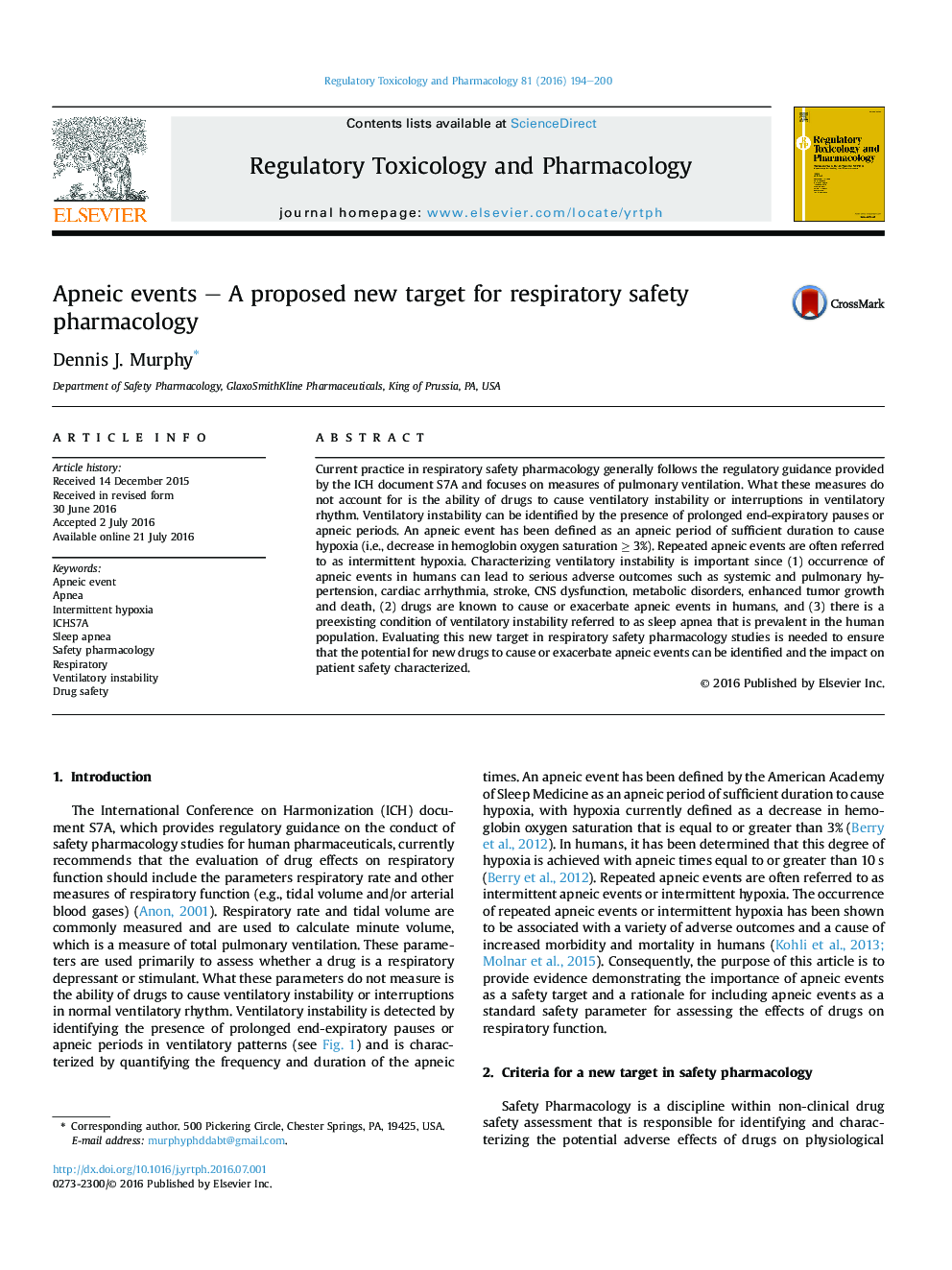| Article ID | Journal | Published Year | Pages | File Type |
|---|---|---|---|---|
| 5855730 | Regulatory Toxicology and Pharmacology | 2016 | 7 Pages |
â¢Current practice in respiratory safety pharmacology studies is guided by the ICH S7A regulatory document that focuses primarily on measures of pulmonary ventilation.â¢These measures do not assess the ability of drugs to cause ventilatory instability or interruptions in ventilatory rhythm.â¢Ventilatory instability can be identified by the presence of prolonged end-expiratory pauses or apneic periods.â¢Apneic events are defined as apneic periods of sufficient duration to cause hypoxia with repeated apneic events leading to adverse outcomes.â¢Apneic events should be a standard target for measurement in safety pharmacology since drugs can cause or exacerbate apneic events and there is the prevalence of sleep apnea in humans.
Current practice in respiratory safety pharmacology generally follows the regulatory guidance provided by the ICH document S7A and focuses on measures of pulmonary ventilation. What these measures do not account for is the ability of drugs to cause ventilatory instability or interruptions in ventilatory rhythm. Ventilatory instability can be identified by the presence of prolonged end-expiratory pauses or apneic periods. An apneic event has been defined as an apneic period of sufficient duration to cause hypoxia (i.e., decrease in hemoglobin oxygen saturation â¥Â 3%). Repeated apneic events are often referred to as intermittent hypoxia. Characterizing ventilatory instability is important since (1) occurrence of apneic events in humans can lead to serious adverse outcomes such as systemic and pulmonary hypertension, cardiac arrhythmia, stroke, CNS dysfunction, metabolic disorders, enhanced tumor growth and death, (2) drugs are known to cause or exacerbate apneic events in humans, and (3) there is a preexisting condition of ventilatory instability referred to as sleep apnea that is prevalent in the human population. Evaluating this new target in respiratory safety pharmacology studies is needed to ensure that the potential for new drugs to cause or exacerbate apneic events can be identified and the impact on patient safety characterized.
